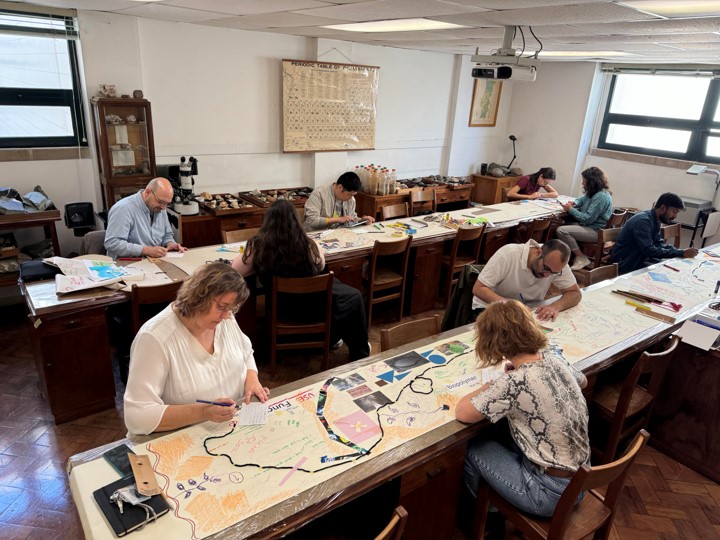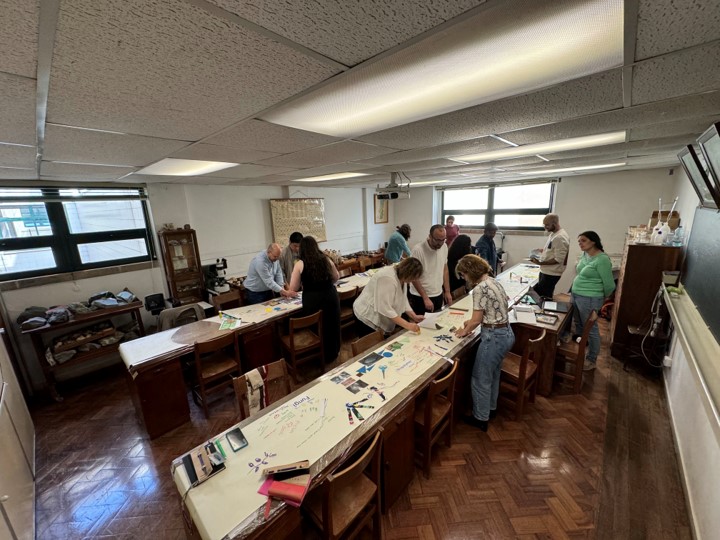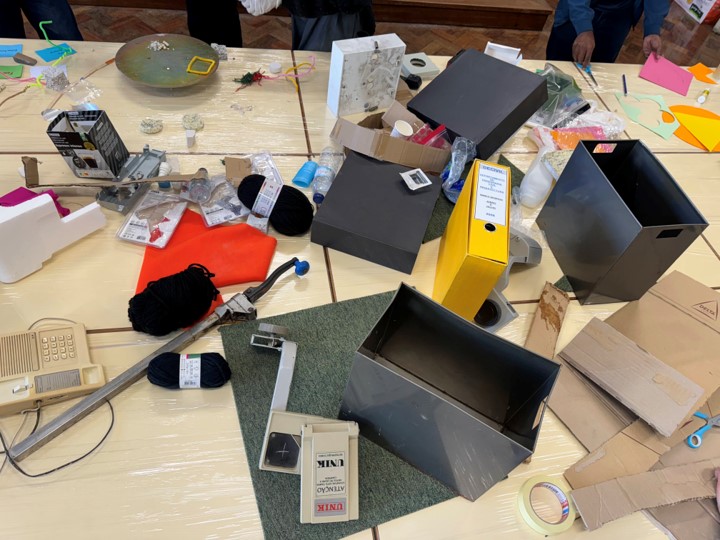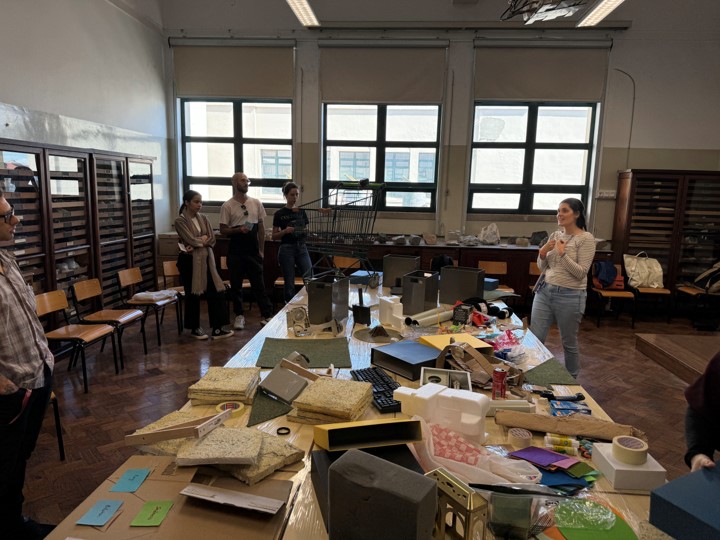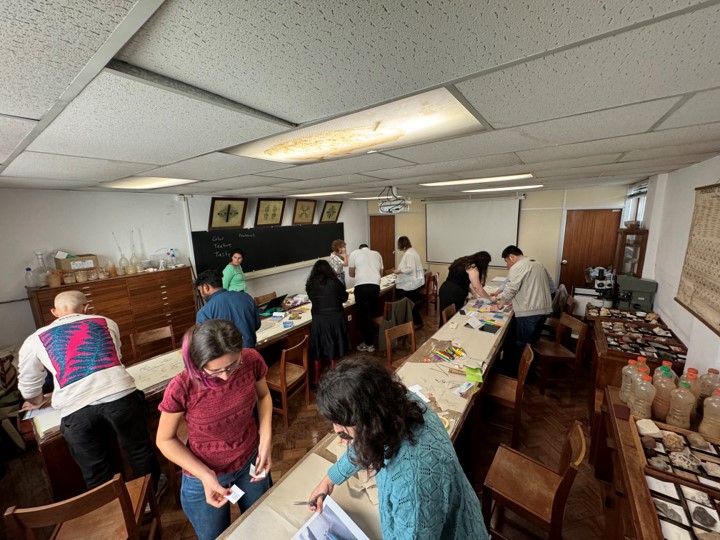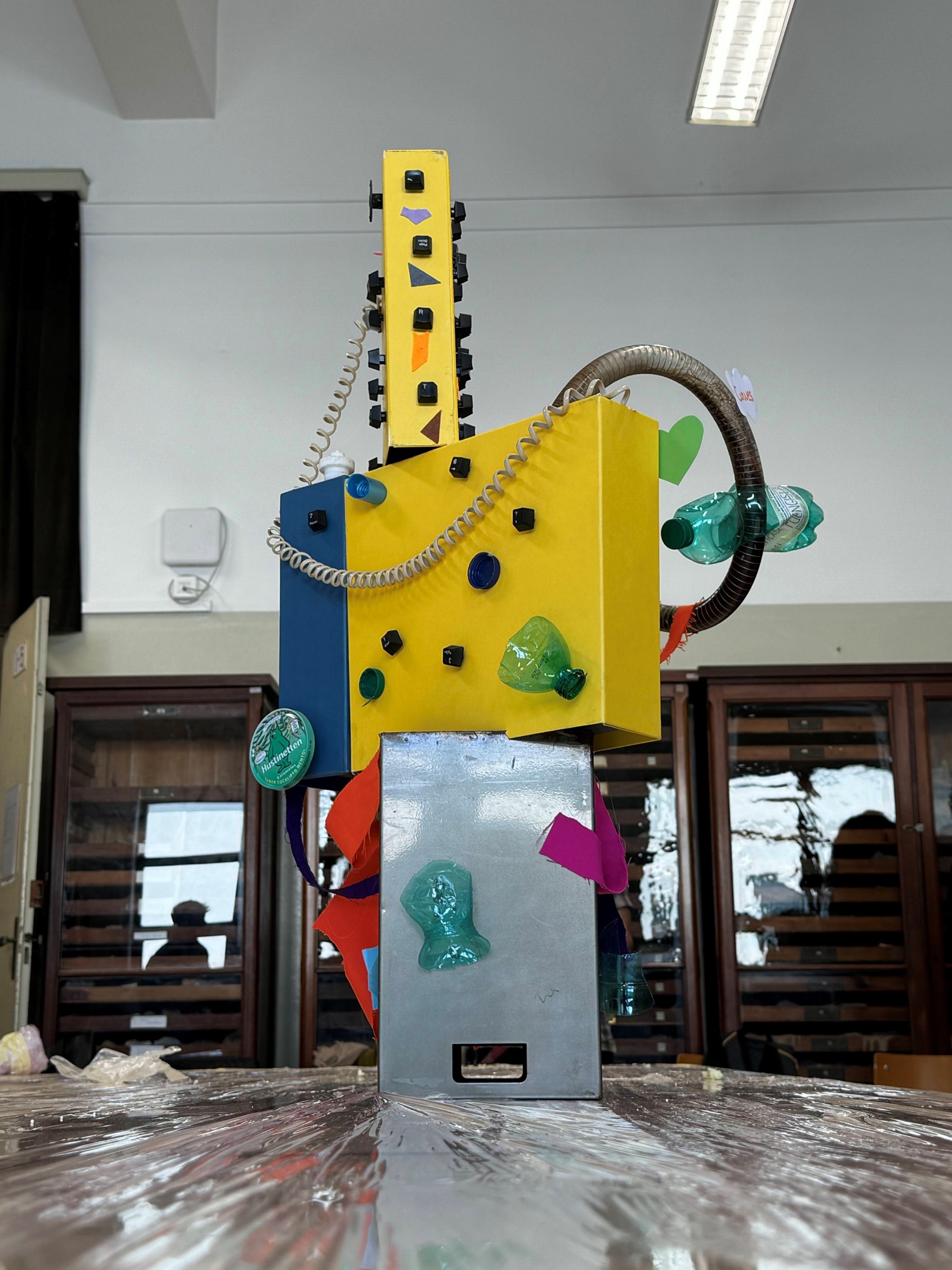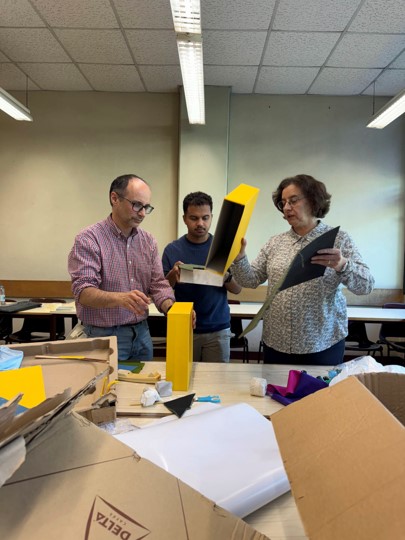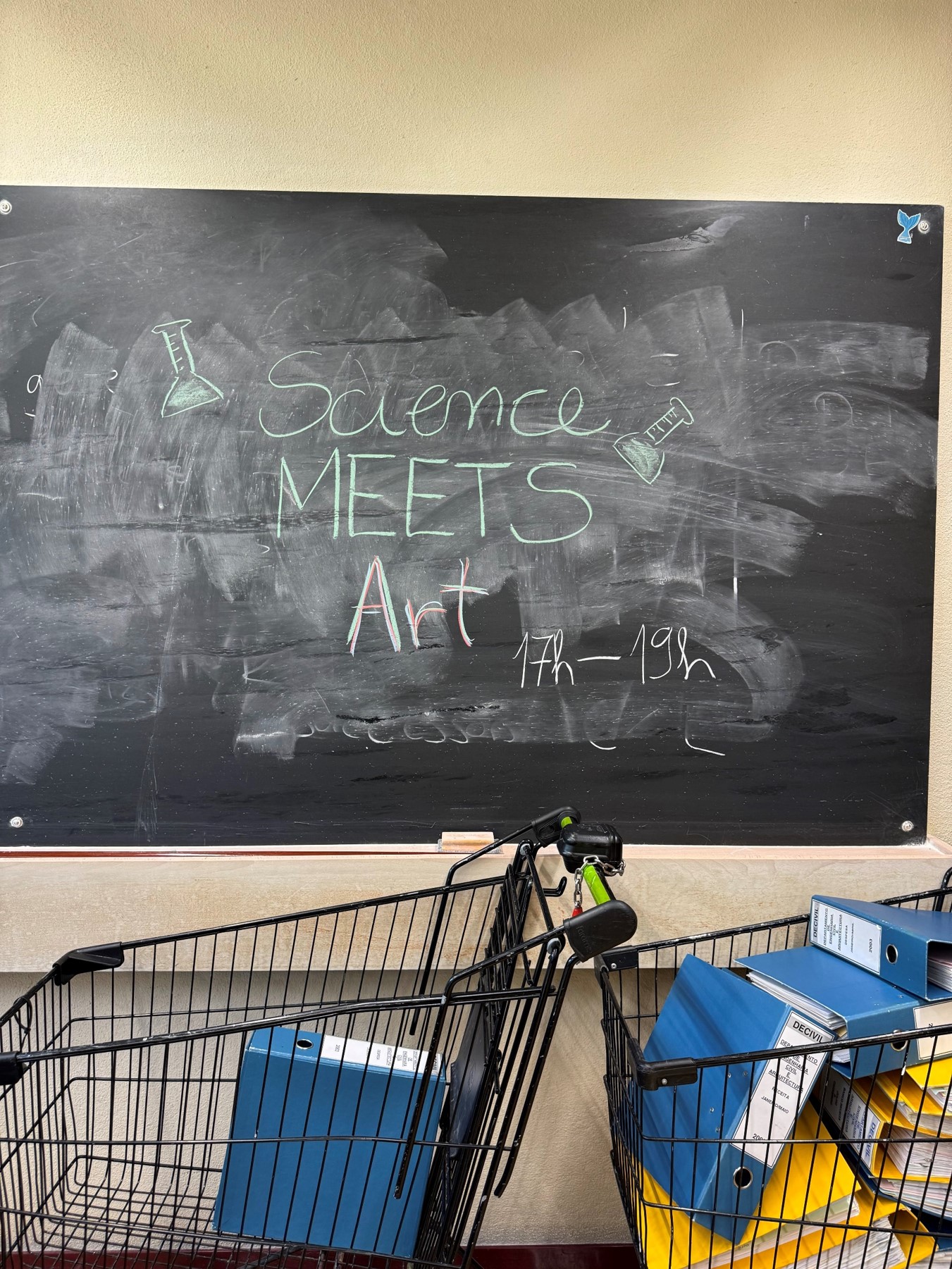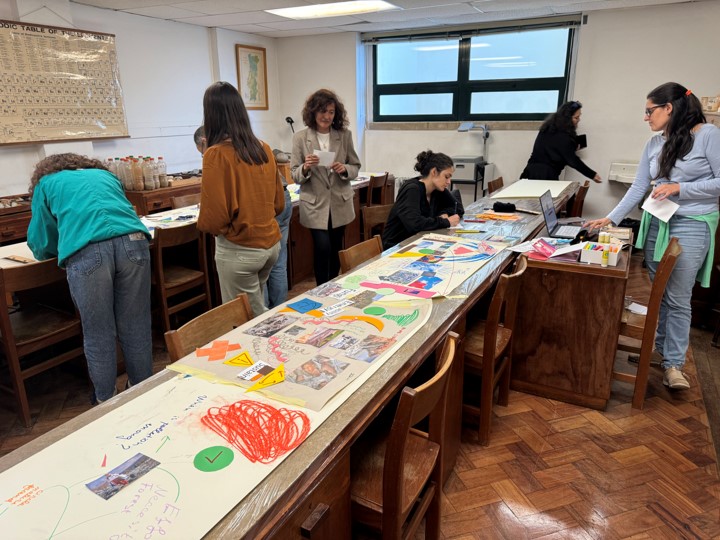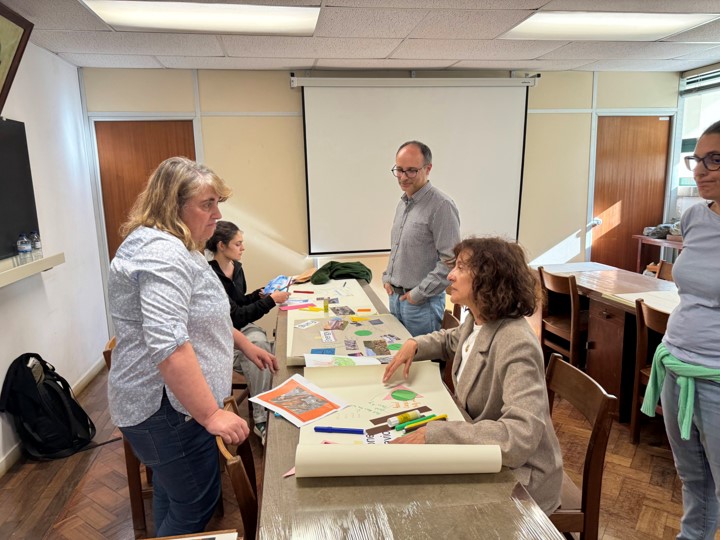Two weeks ago, the workshop “Where Science Meets Art” took place at Instituto Superior Técnico, organized by Maria Paula Mendes (CERENA/IST-ID), Inês Flores-Colen (DECivil/CERIS), Amélia Dionísio (DER/CERENA) e Francesco Turco (CERENA/IST-ID). The workshop was open to the entire Técnico community and was aimed at exploring how artistic practices can breathe fresh air into scientific and technological ideas. Throughout two creative sessions, a diverse group of around 20 participants, including students, researchers, professors, and staff, came together to embrace this challenge. Representing a broad spectrum of expertise, including Civil, Mining, Chemical, Mechanical, and Spatial Engineering, to name a few, they enthusiastically engaged in hands-on collaboration to bring their ideas to life.
Participants were guided through the stages of conceptualization and creation of authentic masterpieces that were later showcased in a public exhibition. The workshop was led by Dr. Elena SV Flys (TAI, Madrid), expert in creative thinking and co-creation, Paola de Diego (TAI/UCM), visual artist and designer and Dr. Antonia Muñiz (UNIR), multidisciplinary artist and researcher in art, science, and sustainability.
On the first day, participants gathered in DER classrooms to explore scientific concepts such as energy, eco-construction, pollution, circularity, misinformation, and biological systems through a non-logical, artistic lens. Using a technique inspired by the “exquisite corpse,” they worked in groups to create mixed-media pieces that were later intentionally vandalized by other groups, in order to dig deeper into the meaning of the original art pieces.
The second session focused on upcycling discarded materials using pieces found on the Alameda campus of Instituto Superior Técnico. Participants began with scientific ideas and were asked to express them through emotions using items sourced from trash bins.
These creations were showcased in an exhibition in the atrium of DECivil, and they attracted interest from colleagues, students, and visitors. The final part of the exhibition was interactive: attendees were invited to deconstruct the artworks and put the materials back in the correspondent recycling bin, to highlight the ephemeral nature of art against the long-lasting value of its message.
One of the reasons Leonardo da Vinci is still admired today after five centuries is his remarkable ability to merge the scientific method with artistic expression. This powerful combination is one of the most effective ways to bring imagination to life. This workshop highlighted the creative potential of interdisciplinary collaboration amongst people of different background and expertise. It was also a platform for internal communication, as a space to form connections across departments and between students and researchers: by stepping out of traditional lab environments, participants discovered new ways of thinking, creating, and communicating.
Photo credits: Paola de Diego, Elena SV Flys, Maria Paula Mendes
